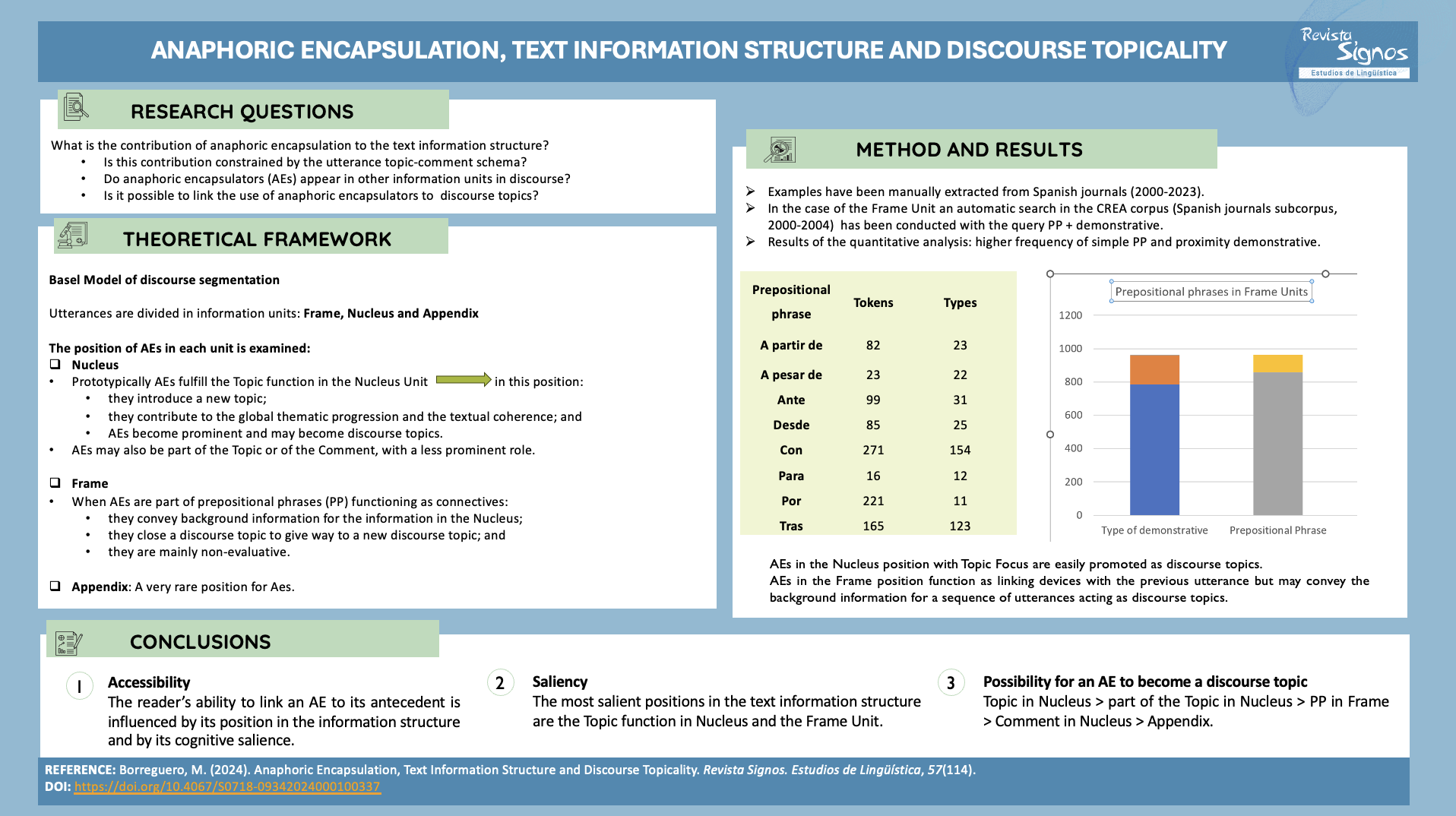Anaphoric Encapsulation, Text Information Structure and Discourse Topicality
Keywords:
anaphor, encapsulation, information structure, discourse topic, Basel ModelAbstract
The contribution of anaphoric encapsulators to the information structure of the utterance has often been restricted to observations regarding their position as sentence topics (theme) or as part of the comment (rheme). However, they may appear in other positions that can be better delimited with the help of a model of discourse segmentation such as the Basel Model. I explore the different discourse functions of anaphoric encapsulators in the three main units delineated in this model: the Nucleus or propositional core of the utterance, the Frame or the information chunk preceding the Nucleus, and the Appendix or slot for background information. Besides, I claim that the possibility for an anaphoric encapsulator to express the discourse topic of (part of) a text is intimately related to its position in the Utterance and propose a tentative scale of access to discourse topicality for this type of anaphors.

Published
How to Cite
Issue
Section
License
Copyright (c) 2024 Revista Signos. Estudios de Lingüística

This work is licensed under a Creative Commons Attribution 4.0 International License.
Copyright agreement:
Authors who have a manuscript accepted for publication in this journal agree to the following terms:
Authors will retain their copyright and grant the journal the right of first publication of their work by means of this copyright agreement document, which is subject to the Creative Commons Acknowledgment License that allows third parties to share the work provided that its author and first publication in this journal are indicated.
Authors may adopt other non-exclusive license agreements for distribution of the published version of the work (e.g., depositing it in an institutional repository or publishing it in a monographic volume) as long as the initial publication in this journal is indicated.
Authors are allowed and encouraged to disseminate their work via the internet (e.g., in institutional publications or on their website) before and during the submission process, which can lead to interesting exchanges and increase citations of the published work (read more here).


